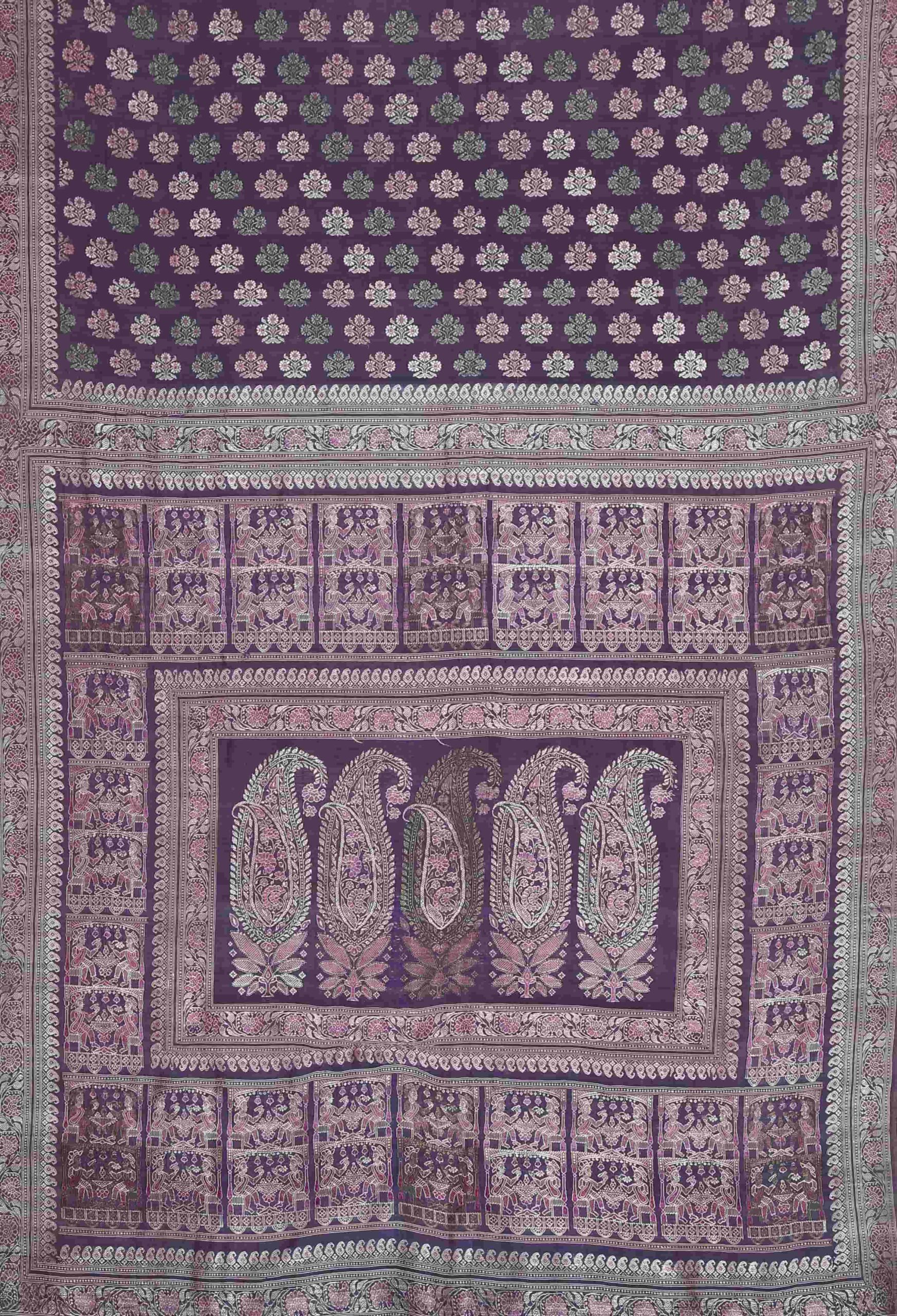
Anyone with a slightest interest in textiles would be familiar with Baluchar weaves. From women smoking hookahs, nawabs driving horse carriages, and even European officers of the East India Company, Baluchari sarees featured such interesting motifs and much more.
Throwing light on the lost art of this weave, Art Konsult presents an exhibition ‘The Woven Art of Baluchar’ featuring rare museum quality Baluchari saree from the collection of Siddhartha Tagore, director of the gallery. The exhibition is dedicated to Indian textile art historian, Jasleen Dhamija.
So what are Baluchar weaves? Baluchar textiles were made from the finest locally cultivated mulberry silk of which the saris were the most versatile. The threads were dyed in natural colours and woven on traditional draw looms locally known as jalas, a mechanism developed and borrowed from Persia following the arrival of Islamic immigrants to the subcontinent. The rich creamy base of the threads absorbed color easily with the deep maroons, reds, chocolate, oranges, and purples being the favorite hues.
Baluchar saris were essentially divided into three sections based on motifs. The pictorial representations found on the pallu or end piece of the sari, supplemented by a variety of motifs, gave it a unique identity. Often termed ‘figured fabrics’, the pictorial representations were a commentary on the changing socio-cultural developments in society while maintaining their value as a unique art form.
What makes it so rare? Nearly two hundred years back, Nawab of Bengal, Murshid Quli Khan, brought Baluchar art from Dhaka (Bangladesh) to a small village named Baluchar on the banks of the river Bhagirathi in Murshidabad (in West Bengal). Baluchari derives its name from ‘balu’ (meaning sand) and ‘char’ (or riverbank).
The art was patronized in Baluchar until the continually changing courses of the Bhagirathi river meant that villagers had to keep uprooting themselves and move along with the river. Eventually, a flooding of the Bhagirathi forced the trade to shift from Murshidabad to Bishnupur (in the Bankura district of West Bengal) in the nineteenth century.
The trade thereon flourished for a while under the Malla dynasty, until the British felt threatened by their inability to replicate this artisanship in the mills of England and forced financial sanctions that squeezed the poor weavers out of their craft and brought it to the verge of shutting down.
Moreover, competition with European mill products as well as the active hostility of the English to the Indian textile industry pushed this art further to its decline. The English wanted raw silk rather than finished goods.
Further, gold-embroidered Banaras saris set new trends in taste as they proved more attractive and comparatively cheaper. Consequently, this Baluchari art of weaving became extinct by the end of the 19th century. Although attempts have been made by the weavers of Ahmedabad and Banaras to revive the figured Baluchari, the imitations never attained the splendour of the original.
In its much-diminished glory, the craft is now being practiced in Bishnupur located in the Bankura district, where the Baluchari style has been superimposed on an existing silk weaving tradition.
The exhibition is on display at Art Konsult Gallery till September 18
Rival leagues trigger players’ suspensions and a legal battle in Indian golf, for now
Former Delhi CM Kejriwal criticises Centre, Delhi govt over worsening air pollution, alleges AQI manipulation
Delhi Police raids Nangloi unit producing fake engine oil, seizes over Rs 1 crore worth…
Mukesh Sharma reimagines digital components as living matter in his solo exhibition ‘Decoding Digital DNA’
Nine accused were arrested in coordinated raids as police uncovered organised networks supplying mule bank…
Nearly 1.57 lakh PUC challans issued in two months as Delhi steps up GRAP enforcement…